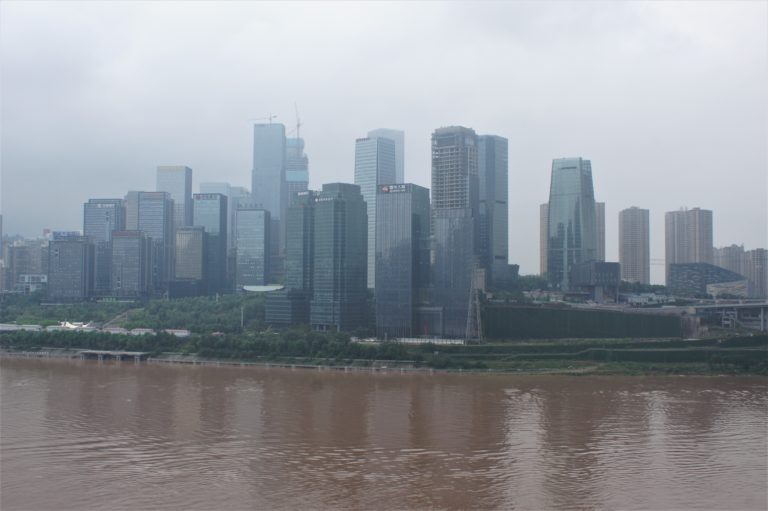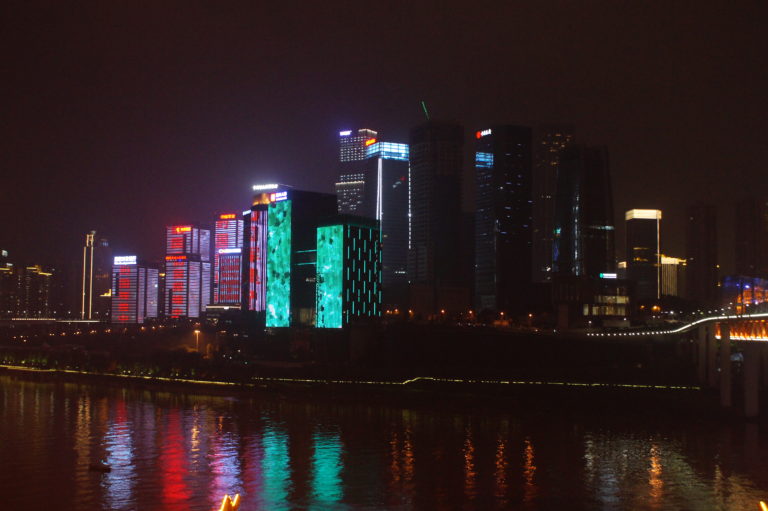
Last month, as part of our Golden Week vacation, we spent 3 days in Chongqing. Chongqing (pronounced chong ching) is a large city in southwestern China that sits on the Yangtze River at its confluence with the Jialing River. The city, with a distinctly gritty and industrial feel, is a stark departure from the tranquil and rural Yangtze River. You immediately sense that this is a rugged and local working city that contrasts with the commerce and globally influenced financial metropolis of Shanghai. The smells, the sprawling concrete jungle haze, and the experiential knowledge that you should never wear open toed shoes while walking the streets here, are just a few of the things that our family will remember from this city.

Though we’ve only been in China three months, we are already feeling a little smug about our adopted city of Shanghai and so were scandalized to read that Chongqing has a population of more than 30 million! Marco, our family’s “greatest” list manager, quickly pronounced that fact false. Technically, the city of Chongqing itself has a population of around (pffft) 9 million. The municipality of Chongqing however, something like a county, is quite large. Because they both share the same name, it confuses more than just you and I but also population statisticians.


After returning home and researching this post, I learned that Chongqing has become notorious in the last 20 years for gangsters, mob type organizations, and local government corruption. About seven years ago, the Chinese government came down hard on the city to clean up its crime and corruption. This round-up ended in a lot of arrests, trials, and even the execution of a high ranking Judicial Bureau leader. The wide spread corruption of Chongqing, as well as other cities in China, is still a problem and was one of the talking points of the recent Party Congress.


The city itself is hilly, with the massive Yangtze winding it’s way through much of it. Before we left Shanghai, we were excitedly told by a local,”Oh you’re going to the mountains! You will travel from sea to mountains in this country!” Due to the smog, we really didn’t see the mountains (and for that matter you don’t really see the seaside in Shanghai either) but the area surrounding it is mountainous and given more time (and energy) taking long day trips outside the metropolis will bring you to beautiful canyons and rolling mountains.

For us, the language barrier and the fact that we were slightly road weary already, quelled our desire to take further treks out of the city, so we decided to explore what was in relative easy reach instead. Two blocks away from our hotel was Hongya Cave. This is locally referred to as Hongya Dong and is a bustling tourist marketplace.


The shops and complicated multi-level wooden structure that you see today centers around a steep cliff and cave which was originally used as a fortress during the Ba state around 1,000 – 200 BC. Through successive dynasties and kingdoms this area has been used as a pier and market on the riverfront and so was always an important area of commerce for the city. The market is built in a piecemeal way with stairs, pathways, and multiple levels winding all around – never seeming to meet. It is like a maze stacked on a maze. An easy place to spend a few hours because it is interesting and because you get lost and can’t find your way out!


The city’s name was formerly transliterated as Chungking which may be more familiar to many. Years ago, there was a brand of canned and frozen Chinese food labeled Chun King. You can read more about that story at CulinaryLore.com. It may go without saying that this canned food is a far cry from the real thing, but it also certainly doesn’t represent its namesake. Chongqing is most known for is its hotpot. A hotpot is a simmering, boiling, hot pot of broth that diners dip uncooked vegetables and meat into prior to eating. Chongqing sits within the province of Sichuan whose cuisine is famously spicy. Similarly, the hotpot in Chongqing is hot on all levels and a very popular souvenir sold on street corners and markets.
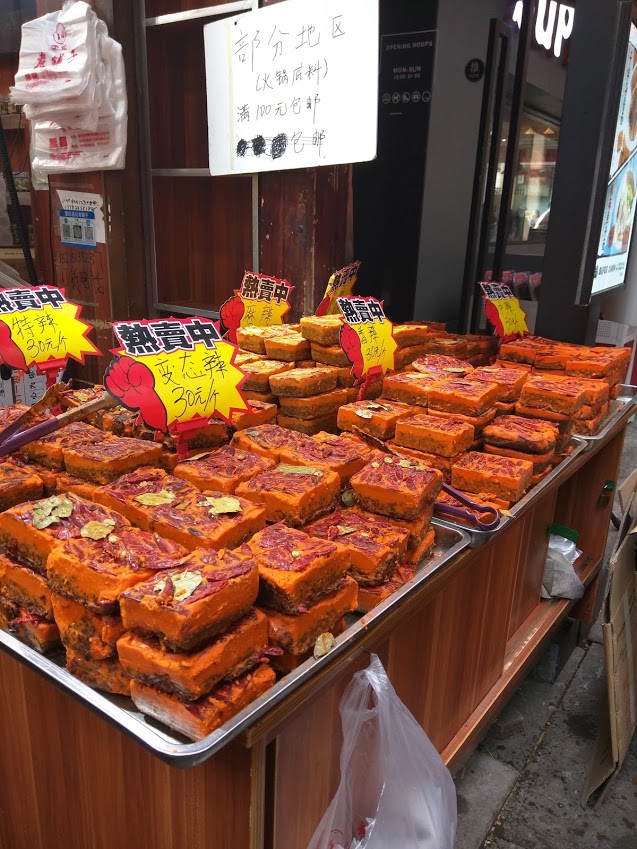
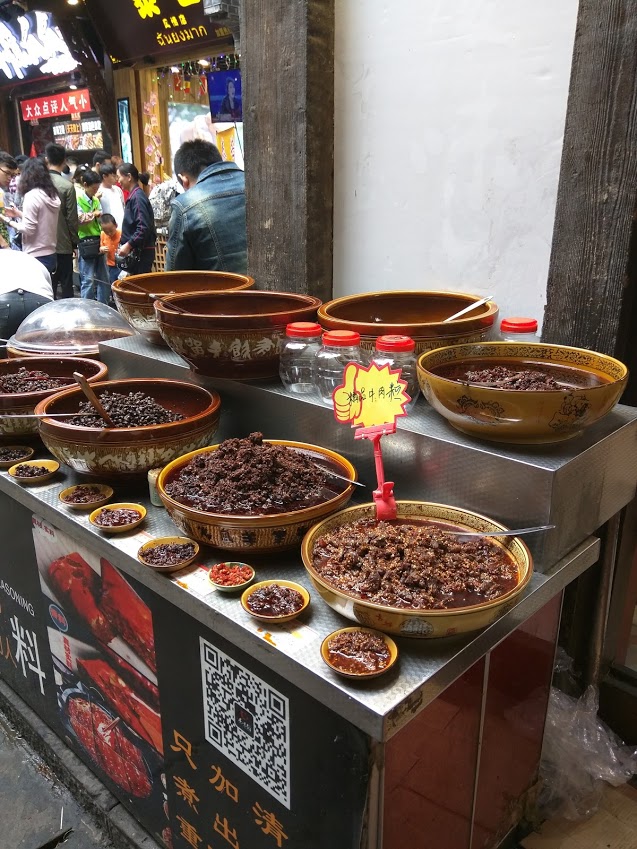
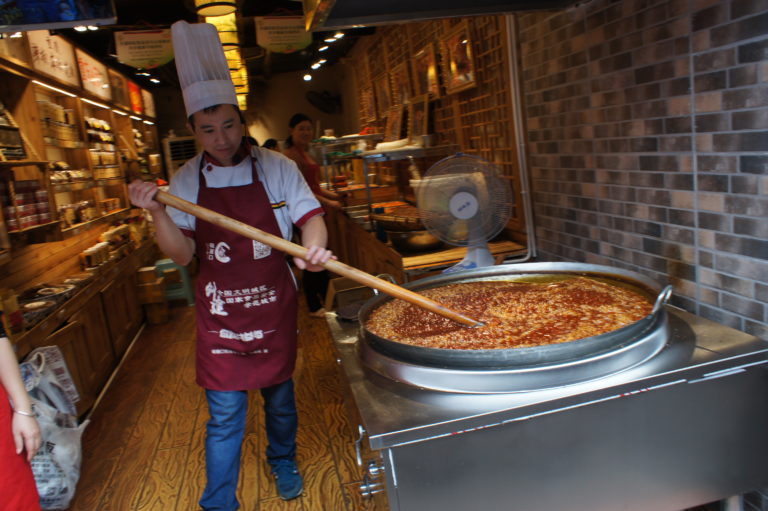
Another delicacy we learned about on this trip was the green orange. We are all familiar with the mandarin oranges in the U.S. These are tasty, and are, well, orange. In China, the oranges you buy on the street from vendors are green. I first walked by them thinking they were limes. But oh, are they are incredibly delicious snacks. I may never eat an orange again without remembering these green ones from China.
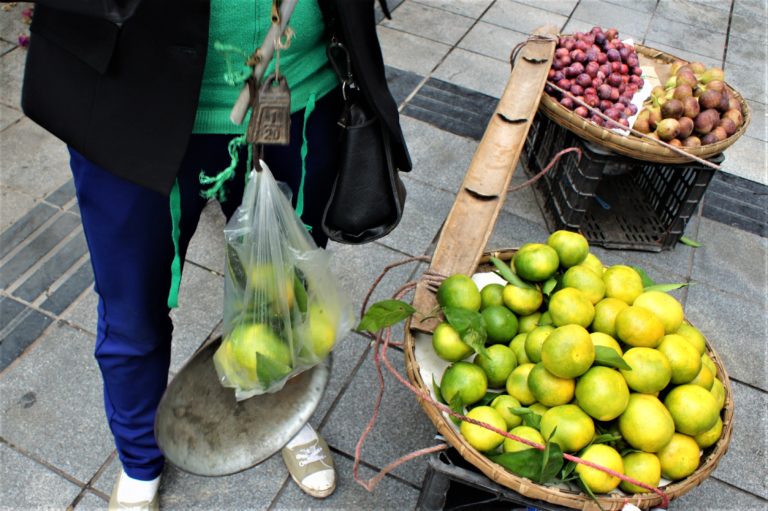
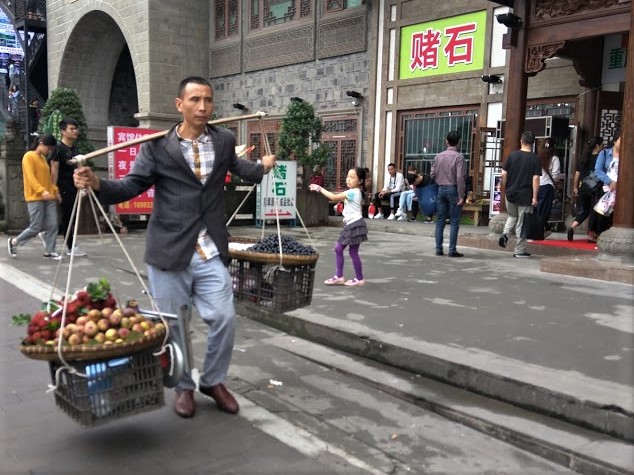
Ciqikou Ancient Village is another popular attraction. The town reportedly traces its origin back to the Song Dynasty in around the year 1000 and was a prominent port town known for its porcelain making.



Today the area is a well-preserved village within the larger city landscape that gives a sense of history. Vendors clamor out into the streets to get their customer’s attention in a variety of ways; by showing their special wares, dressing up in costume,and even singing and dancing.
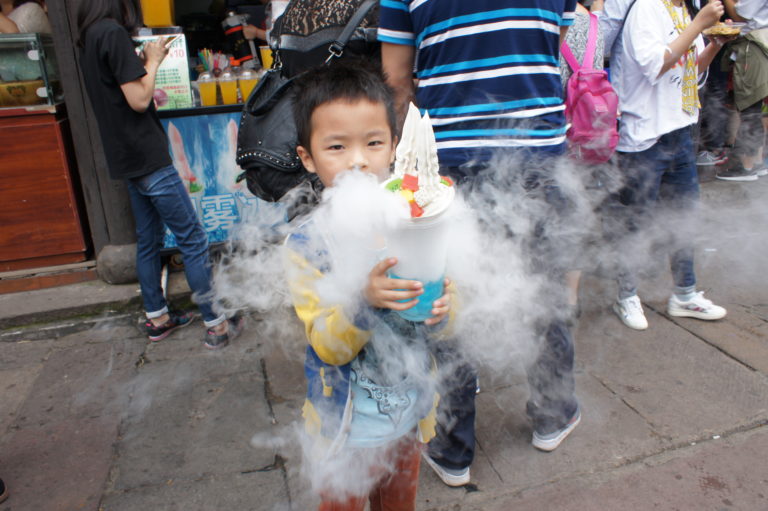
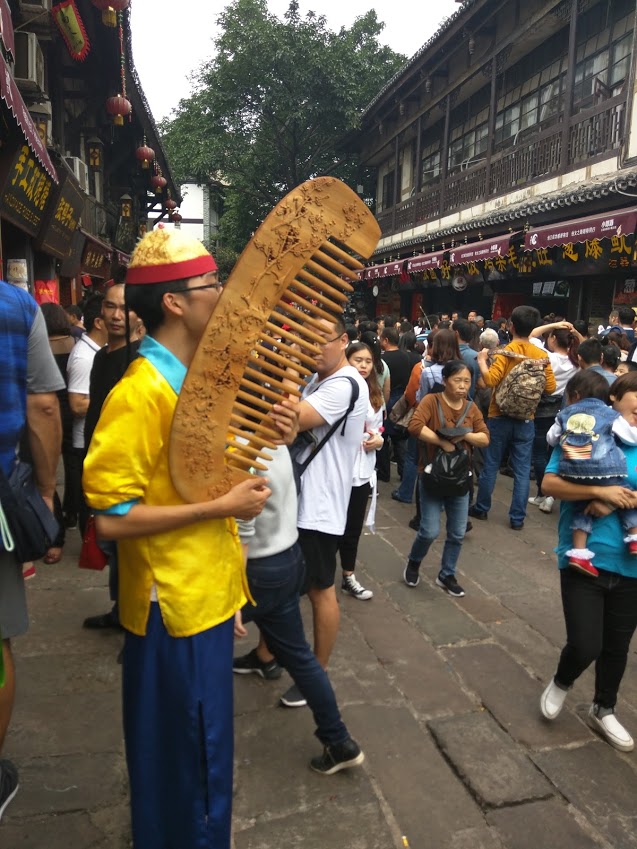
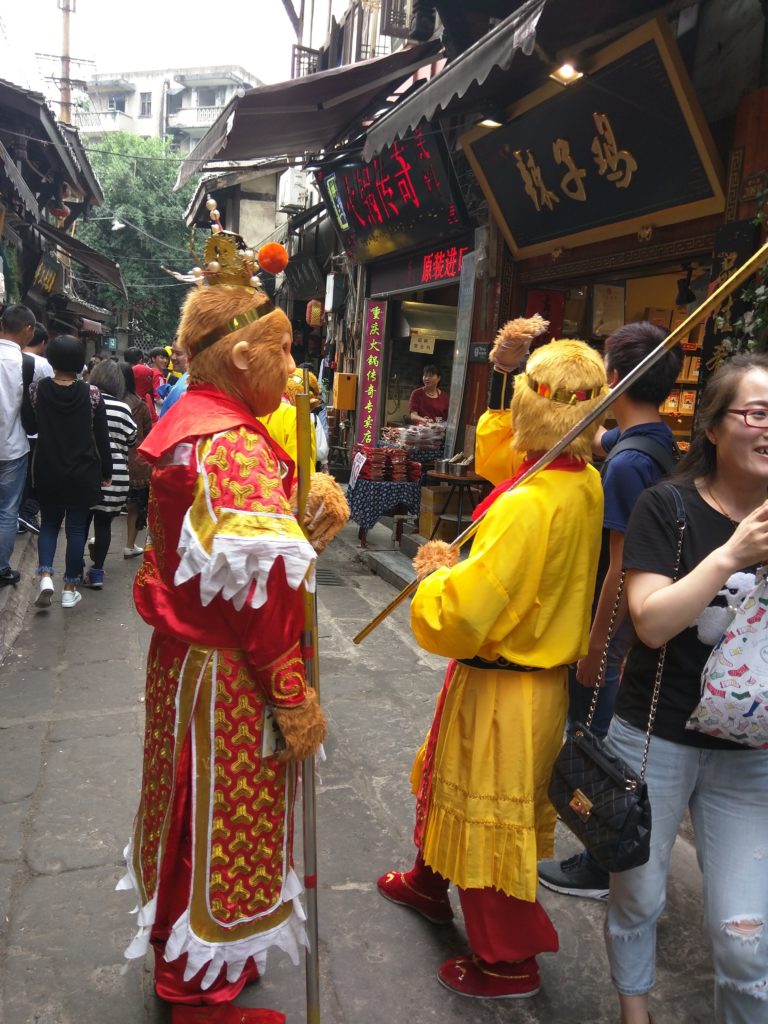
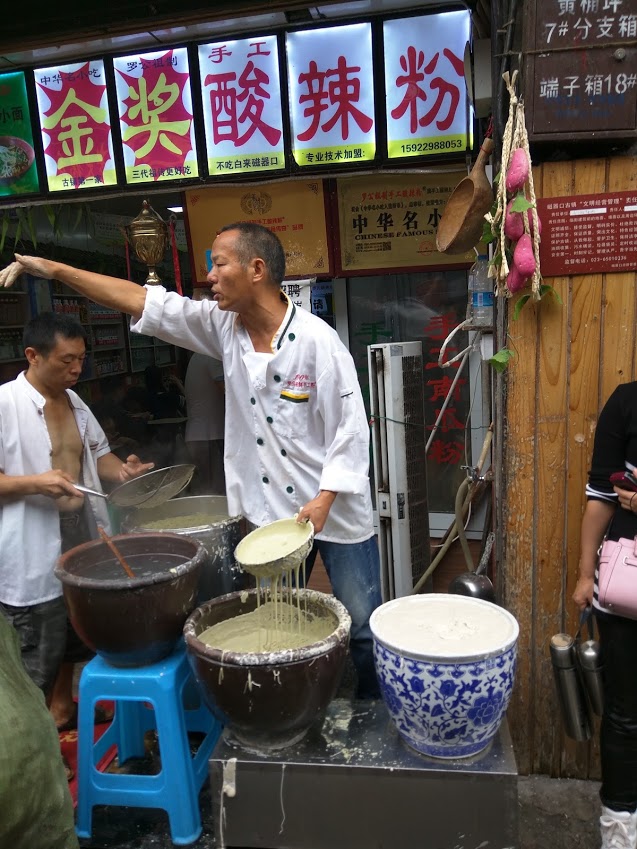

An inexpensive treat at only $6 for all of us, we rested and soaked our tired feet while tiny fish gave us a pedicure. For those who haven’t yet done it, it is an immensely tickling, nibbling, but still overall fun way to re-energize your feet!
The rest of our time was spent walking the streets to take in the surroundings and festivities of the week. Nighttime was really remarkable. At night, the drab by day city, bursts to life with colors and light!


